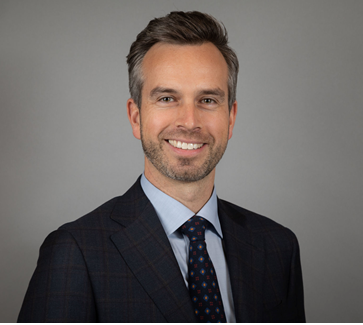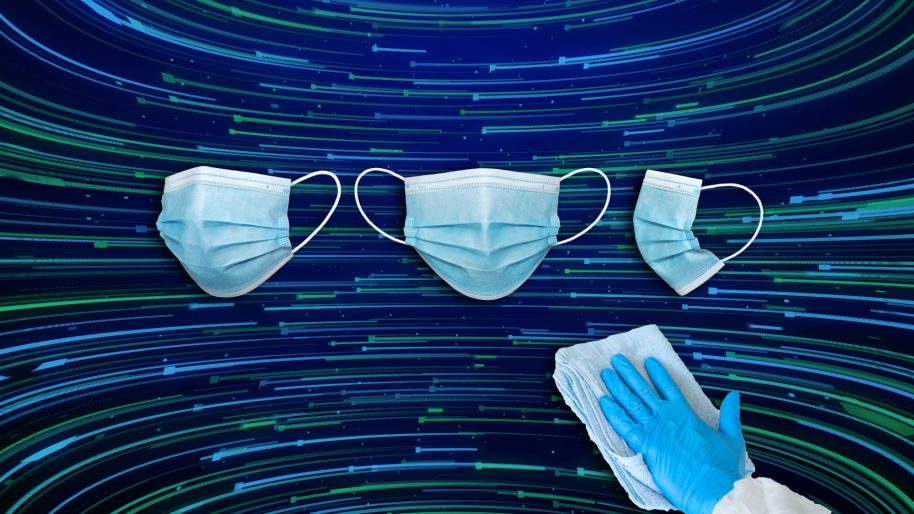COVID-19 is a health tragedy that is likely to become even more tragic than the 1.2 million global deaths so far. However, businesses must find ways to safely re-engage during the pandemic with a focus on future-proofing cleaning, or else economic disaster will exacerbate the pain of illness and loss of life.
Property and facility managers are at the forefront of that push as they operate the buildings that businesses live in. This operational burden brings even more concern as unknown legal liabilities may fall onto property and facility managers in the future, leaving them to ask just how much and should be done to protect occupants from COVID-19 inside buildings?
The purpose of cleaning has changed
On March 11, 2020, the World Health Organization characterized the COVID-19 outbreak as a pandemic. Almost immediately, lockdowns and stay-at-home orders began everywhere.
From that point in time, the world changed for property and facility managers: Traditional cleaning of buildings metamorphosed into cleaning for the health and safety of occupants.
It has been a colossal challenge to slow infections because evidence shows the SARS-CoV-2 virus that causes COVID-19 can spread more easily than the flu. And while everyone awaits vaccinations and new therapeutics, behaviours have not modified enough to flatten the curve of infections; the virus rapidly spreads.
Property and facility managers are now the frontline to prevent contagion from shutting down their buildings — and cleaning for occupants’ health is their new charter.
Opportunities to future-proof cleaning
The cleaning requirement of the moment is to fight COVID-19. The opportunity of the moment, born of tragedy, is to future-proof cleaning against the next pandemic. Now is the time to do both.
For property and facility managers, there are several key areas to focus on (short of becoming a “Disease Detective” in the CDC’s Epidemic Intelligence Service), such as:
- Reconfiguring cleaning specifications for health and safety
- Validating competencies: technical expertise and individual skills
Reconfigure cleaning specifications for health and safety
Future-proofing cleaning against pandemics means altering specifications in a number of ways. Some are subtle, and some have the potential for unintended, negative consequences.
The following, though not an exhaustive list, outlines considerations where cleaning specifications can be better used to fight this and future pandemics.
Recognizing disinfection is a 2nd step after cleaning
Prior to this pandemic, disinfecting surfaces was a standard specification when cleaning sensitive spaces, such as healthcare facilities, food production, cleanrooms, etc.
Now, with COVID-19’s spread, disinfecting surfaces have been added to virtually all buildings regardless of their pre-pandemic need. Office properties, retail buildings, public transit, arenas, convention centres, etc. are now including disinfecting in their cleaning specifications.
This new disinfection reality adds a second step to the cleaning process. And this brings challenges that can be overcome but only by addressing them with cleaning contractors/in-house teams before revising cleaning specifications.
For example, if cleaning staff are not properly trained in safe disinfection procedures, they can easily use the wrong chemistry, causing unsafe chemical reactions (e.g. harmful vapours) and surface damage to fixtures and finishes (e.g. bleach used on leather furniture). Also, when adding disinfection tasks, cleaning costs rise, demand for PPE skyrockets (gloves, N95s, gowns), and disruptions/delays can occur in disinfectant and equipment supply chains.
Increasing disinfection frequency and visibility
The most common cleaning response to the pandemic is to increase the frequency of disinfecting common areas (e.g., lobbies, restrooms, elevators, etc.). Typically, this is done during business hours by cleaners wiping touchpoints (door handles, elevator buttons, handrails, etc.) with disinfectant. Disinfecting has also been moving from a weekly to a daily cadence, often several times a day, to become an almost continuous activity.
Besides reducing surface contamination and the potential spread of illnesses, daytime disinfection provides a visual signal to building occupants that property and facility managers are making their workplace safer.
Other frequency adjustments can include increased nighttime fogging and/or electrostatic application of a disinfectant. This high-volume application can cover larger areas faster, reach further into spaces, and coat multiple sides of touchpoints, objects, and fixtures.
This disinfection must be done at night or non-business hours to avoid the risk of occupants inhaling disinfectant. Cleaners are protected during this disinfectant application by wearing the appropriate PPE that includes face masks. 
Reconfiguring non-daily, in-scope tasks to “as needed”
Cleaning budgets need to be reconfigured to make room for disinfection and decontamination while aiming to stay near overall pre-pandemic levels. The goal of shrinking normal cleaning and adding disinfection will still likely increase spending, but today it is a worthwhile exercise, regardless of the outcome.
Reconfiguration can be done by moving less frequent tasks (formerly in-scope) to “on-demand” at the request of property and facility managers.
First, review all annual, semi-annual, and quarterly cleaning tasks now in the annual budget or contract, such as sweeping stairwells, high vent cleaning, dusting blinds, stripping and refinishing hard surface floors, interior and exterior window cleaning, etc. These are any and all tasks not done daily or weekly.
Then, identify a group of tasks and remove them from the budgeted scope, placing them outside the fixed spend. Where using building service contractors (BSCs), this means amending cleaning contracts and getting individual pricing for “on-demand” tasks. With in-house departments, budgets may have to be re-forecast.
And there are potential negatives to consider with reconfiguration (aka deferred cleaning), such as:
- Building aesthetics can suffer and impair the image of cleanliness, e.g. dusty stairwells, scuff-marked hard floors, untidy entrance exteriors, etc.
- More time is required of property and facility managers to oversee cleanliness, frequently revisit budgets, and request “on-demand” cleaning tasks
Lastly, it is important for property and facility managers to note that reconfiguration doesn’t entirely remove costs, it only provides flexibility for when to take the expense of an individual cleaning task. “On-demand” tasks that are requested will add costs back into the total overall spend.
Validate competencies: technical expertise and individual skills
When the COVID-19 pandemic began, BSCs and in-house departments were instantly tasked with becoming disinfection experts of an unknown pathogen.
They scrambled to acquire enough supplies and equipment to fulfill new disinfection services. Success varied wildly — with some hitting stride immediately, some starting slowly then coming up to speed, and others being consistent failures. Not every disinfection service provider delivered as hoped.
The “newness” and immediacy to clean workplaces against COVID-19 raised questions for property and facility managers, such as “Is this cleaning making my space safe?” and “Do these cleaners know how to disinfect correctly?”
Answering these questions requires validation of competencies. This is where third-party and/or industry certifications help provide a level of confidence. Consider the following:
BOMA Best Clean Buildings
- Canadian certification for cleaning organizations and facilities in best-practice recommendations and validation of competencies and practices
- Provided by BOMA Canada, an affiliated member of BOMA International
- New in Fall 2020
- Accreditation for facilities in outbreak prevention, response, and recovery for staff and buildings
- Provided by ISSA, leading trade association for the cleaning industry worldwide
- Certification for cleaning organizations to secure points under LEED EB: O&M, Green Building Rating System
- Provided by ISSA, leading trade association for the cleaning industry worldwide
- Training and certification for cleaners to teach hospital-grade cleaning skills for all industries
- A Canadian-based training and certification program developed by Good Choice Cleaning Services Inc.
BSCAI’s COVID-19 Disinfection & Safety
- Training and certification for cleaners to supplement safety and routine disinfection techniques with a specific focus on COVID-19
- Provided by BSCAI, trade association of the building service industry in U.S. and 30 other countries
GBAC Fundamentals Online Course: Cleaning & Disinfection Principles
- Training and certification for cleaners to prepare for, respond to, and recover from biohazards in the workplace, such as the novel coronavirus (SARS-CoV-2)
- Provided by ISSA, leading trade association for the cleaning industry worldwide
Future-proofing is here in present time
The time to future-proof cleaning, fight the current pandemic, and prepare for the next pandemic is now. There’s undoubtedly a lot to accomplish at one time, yet that is the challenge for property and facility managers. Perhaps counter-intuitively, it is also the opportunity of the moment.

Rob Scott holds a Ph.D. in Cell Biology from the Faculty of Medicine at the University of Alberta. He is the Executive Vice President for Bee-Clean Building Maintenance in Western Canada and co-chairs its National Pandemic Management Team. He can be reached at rob.scott@beeclean.net or at 780-964-0000.








